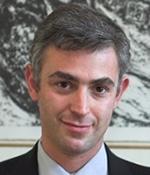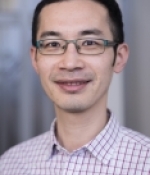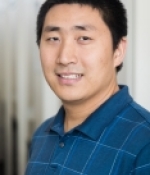 |
David F. KelleyProfessor, Chemistry & Biochemistry Professor Kelley's research group uses ultrafast optical spectroscopy to examine the optical and electronic properties of semiconductor nanoparticles. He focuses on layered semiconductors - specifically gallium selenide and indium selenide - which have layered crystal structures and form two-dimensional, disk-like nanoparticles. The optical properties of indium selenide are very well suited for the absorption of sunlight; therefore, its nanoparticles hold considerable promise as the active media in photovoltaics. Professor Kelley's group synthesizes nanoparticles that have diameters from 2 nm to tens of nanometers - all of which are four atoms thick - as the properties of such nanoparticles are strongly size dependent, due to quantum size effects. He is primarily interested controlling and optimizing the properties of the nanoparticles for solar energy conversion. |
dfkelley@ucmerced.edu(209) 228-4354Full Profile |
 |
Aleksandr NoyAdjunct Professor, Chemistry & Biochemistry
|
anoy@ucmerced.edu(925) 424-6203Full Profile |
 |
Tao YeProfessor, Chemistry & Biochemistry Professor Ye's research is focused on developing the nanoscale surface chemistry needed to manipulate and measure biomolecules and analogous systems. The nanoscale arrangements of biomolecules, such as proteins and DNA, underlie a wide spectrum of biological functions. Yet our ability to measure and control biomolecules at the nanoscale and single molecule level remains very limited. His group is using and developing sophisticated nanoscience tools to position and measure single molecules with nanometer resolution, dynamically activate the functions of individual biomolecules on surfaces, and develop artificial analogs of biological motors. The greatly improved understanding and control of biomolecules at the nanoscale have implications in unraveling key biological functions, creating artificial functional bimolecular structures, and developing ultra-sensitive biosensors. |
tye2@ucmerced.edu(209) 228-4094Full Profile |
 |
Liang ShiAssociate Professor, Chemistry & Biochemistry Developing and applying multi-scale modeling methods to understand the structure, dynamics and spectroscopy of complex condensed-phase molecular systems, such as - novel optoelectronic materials (e.g., organic semiconductors and quantum dots) - supercritical aqueous solutions |
lshi4@ucmerced.edu(209) 201-2409Full Profile |
 |
Anne Myers KelleyProfessor, Chemistry & Biochemistry Professor Kelley's research uses the laser light scattering techniques of resonance Raman and hyper-Raman spectroscopy to study the atomic-level details of how materials interact with light. These studies reveal the detailed mechanisms of fast photochemical reactions such as those involved in human vision, photography, xerography, and solar energy conversion. Her group carries out experiments and also develops theoretical and computational tools for analyzing the data. Currently, her work focuses on using these techniques to understand how the vibrations (phonons) of semiconductor nanocrystals influence and are influenced by, absorption and emission of light in these materials. |
amkelley@ucmerced.edu(209) 228-4345Full Profile |